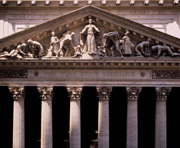Earlier this month, the 214-year-old New York Stock Exchange made its first major investment in South Asia when it bought 5% of India’s National Stock Exchange (NSE) for $115 million. At first glance, that might look like a modest investment, but it reflects NYSE’s recognition that if it wants to remain on top as one of the world’s leading exchanges, its future growth will come from rapidly expanding emerging economies like India rather than from the relatively mature U.S. market. What will the transaction mean for both exchanges and global stock markets? India Knowledge at Wharton spoke with Wharton faculty and other experts about the deal.
The NYSE’s investment in the NSE is consistent with other moves that show it is placing its bets on markets outside the U.S. The announcement of the NSE investment on January 10 seemed to wait out the Christmas holiday break after the Reserve Bank of India, India’s central bank, on December 22 allowed foreign investments in its stock exchanges of up to 26%, but with a limit of 5% on individual investors. Also, in December, the NYSE moved forward with its planned $14 billion deal to merge with pan-European exchange operator Euronext to create a new trans-Atlantic bourse. Three months earlier, the NYSE had bought Marco Polo Networks, a New York City firm whose electronic platform enables trading in equities and derivatives on emerging-market exchanges.
The NYSE set the stage for all these moves last March when it became a for-profit organization with its acquisition of the Archipelago Exchange in Chicago, about which Knowledge at Wharton has written in the past. Moreover, the NYSE reportedly has been interested in acquiring a stake in the Tokyo Stock Exchange, which could gather momentum in the coming weeks.
The NYSE has hardly been the only U.S. stock exchange to seek growth in overseas markets; its rival Nasdaq has been equally active. In fact, on the day the NYSE won shareholder approval for the Euronext deal, the London Stock Exchange asked its shareholders to reject Nasdaq’s $5.3 billion hostile takeover bid. Of the two exchanges, Nasdaq was the first to launch a growth-by-acquisition plan with its April 2005 purchase of electronic trading firm Instinet for $1.9 billion.
NYSE’s interest in the NSE as its vehicle of choice in India — it had also considered the older Bombay Stock Exchange — was matched by other investors. Independent of the NYSE deal, three other private equity players — Goldman Sachs, Japan’s media and financial services firm SoftBank and private-equity firm General Atlantic — also bought 5% stakes each in the NSE on the same day. All these were secondary market deals in which the sellers were Indian institutional investors.
The market capitalization of companies listed on the NYSE and its subsidiaries is about $23 trillion, while that of India’s NSE is some $809 billion. If the NSE is puny compared to the NYSE, that difference also helps explain the deal’s rationale. Vinay Nair, a professor of finance at Wharton, pictures the stock exchange industry’s growth curve as one that is steep in the early stages before it begins to flatten out. “The NYSE is on a path that is relatively flat today, and it wants to continue growing at the rate it did when it was younger.” The way the exchange is going about it is by investing in new exchanges whose growth curves are still fairly steep, he adds.
According to Nair, the NYSE’s desire for growth is unlikely to be fulfilled in the U.S. financial market, which he believes is saturated. “In this business, it doesn’t make sense to try and build a stock exchange from scratch to compete with another exchange that already has the first-mover advantage,” he says. “In order to continue growing at the rate the NYSE wants to, it is imperative that it enter into strategic alliances or mergers outside the U.S. where financial markets are not yet saturated.”
Nelson Chai, NYSE’s chief financial officer and executive vice president, says his exchange has “a very long-term view on India,” and he is “very bullish” about the country’s long-term outlook. “This deal puts us closer to the Indian marketplace, and we think the NSE is the best stock exchange there,” he says. “We think it will allow us to have greater access both within the government and within the business community. We think we will be able to share in the growth. There are some things we can do with the NSE, maybe in terms of new product types, that could bring both our marketplaces together.”
Chai says the question about the Indian investment was not an “if” but “with whom and when.” He recalls what India’s Prime Minister Manmohan Singh said when he visited the NYSE in September 2004: “No power on earth can stop an idea whose time has come.” Currently, 10 Indian companies are listed on the NYSE with a combined market capitalization of $76 billion. Other Indian companies, too, are exploring listings at the exchange.
Wharton finance professor Franklin Allen says “India is now the fourth-largest economy in the world” based on purchasing power parity, and “it will soon overtake Japan and become the third-largest after the U.S. and China.” He adds that the country holds “great promise” for western countries in terms of investment because its institutions are more western-styled than those in China, for example. “If the NYSE wants to be part of the growth in the world, it is understandable why it wants to then become part of the Indian exchanges,” he says.
The View from India
For the NSE, the relationship with the NYSE makes sense for three reasons, says Ravi Narain, its managing director and CEO. “Many of the companies that list their securities with us are becoming global, and many of our investors have started developing a global perspective and are looking for global cues,” he says. “It is inevitable that the exchange itself should begin to think with a global perspective. That is the overarching reason.”
Second, Narain says that if there is one industry that is truly global, it is financial services and the financial markets in particular. “The rapidity with which exchanges are thinking of cross-global alliances and diversification makes it impossible for us to remain insulated,” he says. Third, he sees continuing policy signals from the Indian government that the financial markets need to brace themselves for a fully convertible rupee and a time when Indian companies will hold a significant portion of their portfolios in offshore assets.
Nair suggests the NYSE is a natural first choice as a global partner for the NSE because the U.S. has had a head start over other countries in developing financial markets. “The NYSE has many more years behind it than other stock exchanges around the world.” Most advances in this business today come from technology and scale. “Since scale is a big factor, this business is largely considered a consolidation business, where within any country you will have one or two exchanges,” Nair explains, adding that two exchanges exist largely because of anti-trust issues. “The same argument applies in a global context, because, again, the differentiation between global [stock exchange] businesses is very limited.”
Nair says the NYSE today is “a completely different animal” than it was a few years ago. “Ever since it went for-profit after the merger with ArcaEx (Archipelago Exchange), it thinks very differently,” he says. “As a for-profit organization, it wants to grow, and the only growth opportunity is in overseas markets.” Even as exchanges such as the NYSE seek to encourage higher trading volumes by introducing innovative vehicles such as exchange traded funds, the impact is rather small, says Nair. “The big jumps happen when you get into new markets.”
Ringside Seat
Ravi Aron, senior fellow at Wharton’s Mack Center for Technological Innovation, believes the NYSE is buying “a ringside seat at the locus where business is taking place.” He says it allows the exchange to better understand how the Indian stock markets work and build relationships with companies that are listed there. “Indian companies have a strong offshore footprint and they have a considerable part of their business overseas,” he says. “The NYSE could target Indian companies that have made international acquisitions and try to get them to list at the NYSE rather than with Nasdaq.”
Narain’s franchise is walking up the same street from the other end. He says that if the NSE wants to remain relevant to the needs of its customers as they look for offshore assets, it “must build some pipes and relationships with entities offshore, so they can think of the exchange as a vehicle.” Chai says in trying to build stronger linkages between customers across global exchanges, the NYSE’s acquisition of Marco Polo Networks is significant as an electronic platform that enables trading in equities and derivatives on emerging-market exchanges. “It helps us provide more customer connections,” he says. “There is more and more interest in the U.S., for instance, in portfolio managers, to have better access to buy and sell Indian companies. We are seeing that on the buyer’s side, people are moving away from trading geography and moving much more in trading sectors.”
It’s a two-way street even with the three private equity (PE) investors that bought NSE stakes at the same time as the NYSE, according to Nair. He says the PE model works in three ways to make money, and uses a process of elimination to find the most likely drivers in the NSE case. “One is leverage, which largely doesn’t exist in India. The second is multiples — you buy at a low multiple and sell at a higher one, which is essentially market timing or growth that you create,” he says. “The last one is operational, in which you go into a firm, and then you add value, and then exit and benefit from the value that you’ve added.” He sees the PE investors both creating value for the NSE and timing their investment when prices are relatively low in a rising market. “What drives this deal is the multiple-based deal, what is normally referred to as a growth-equity deal,” he says.
Nair says the three PE investors will “definitely add more value than the investors they replaced,” who were public sector banks and insurance companies that typically get drawn into such enterprises as co-promoters by government pressure. “If things go wrong, they (the PE investors) will add a lot of value,” says Nair. “They have other financial investments, a stable of executives they could draw from, [and] they have useful advisory roles they play in companies.” He expects them to cash out and exit their NSE investments within three years.
$2.5 Billion Valuation
From a valuation standpoint, Narain is very pleased with the new investors because of the enterprise value of $2.5 billion the deals indicate for the NSE. “It is not hugely different from the price-earning multiples that exchanges command globally, of about 30 times,” he says, adding, “In one short move the NSE has been catapulted to the global league.”
Narain says the NYSE investment has sparked interest from investors across the globe seeking to invest in the NSE. “The interest from others is enormous,” he says. “We are getting a couple of enquiries every day from the world of private equity” now that the news has broken out.
Both Chai and Narain say the two exchanges have yet to work out ways in which their collaboration could work, especially in sharing best practices and technological resources. At the NYSE, one current effort is to augment the floor trading system by providing a hybrid, says Chai. “It’s really about customer choice; it’s giving customers the opportunity to decide if they would like to send their orders to the floor or if they’d like to do it completely electronically,” he says. The exchange operates off two platforms — the standard NYSE trading system and a new platform launched after the ArcaEx acquisition that handles all the over-the-counter trading, ETFs, options trading and other new generation products. Chai talks of efforts to “marry these systems.” That is helped by the fact that a lot of the electronic exchanges are basically applied technology businesses, he says. With that as the broad backdrop, Chai says, “Over time you will see us (NYSE and NSE) continue to try to learn from each other.”
That process of sharing experiences and lessons learned will come in handy especially in times of crises such as those the NYSE has lived through: 9/11, the tech bust of April 2000, the crash of October 1987. Allen says the NYSE did “a wonderful job” in each of these crises. “The one blemish they had was the issue of compensation — with [former CEO Richard] Grasso — but apart from that it’s been an exemplary organization.” He describes the Indian exchanges too as “excellent,” adding that they are “very sophisticated exchanges, and perhaps the best in the emerging world.”
Allen says that although there have been “many more days or reckoning for the NYSE than any other stock exchange” from, say, the 1920s, the NSE’s learning opportunity there is limited. How much you can learn from these things “is questionable because the model has been different; the way the exchange has operated each time has been very different,” he says. “The crash in the 1920s is very different from the tech crash (of April 2000), which is itself very different from even a 3% move last year. The way the market has developed, it has tried to reduce its susceptibility to these kinds of attacks or hysteria. So yes, you can learn, but I’m sure you can learn this even without a 5% investment.



